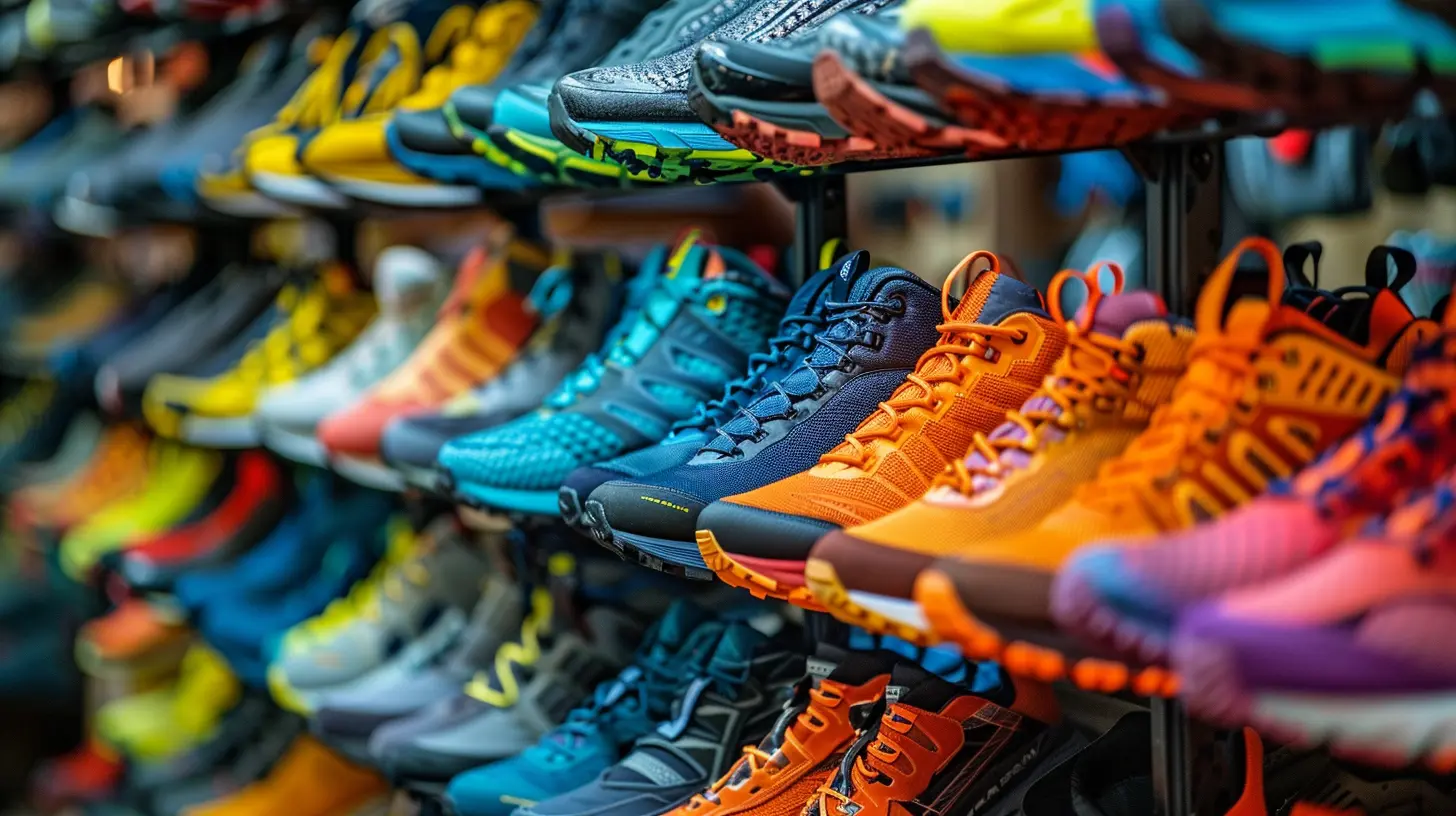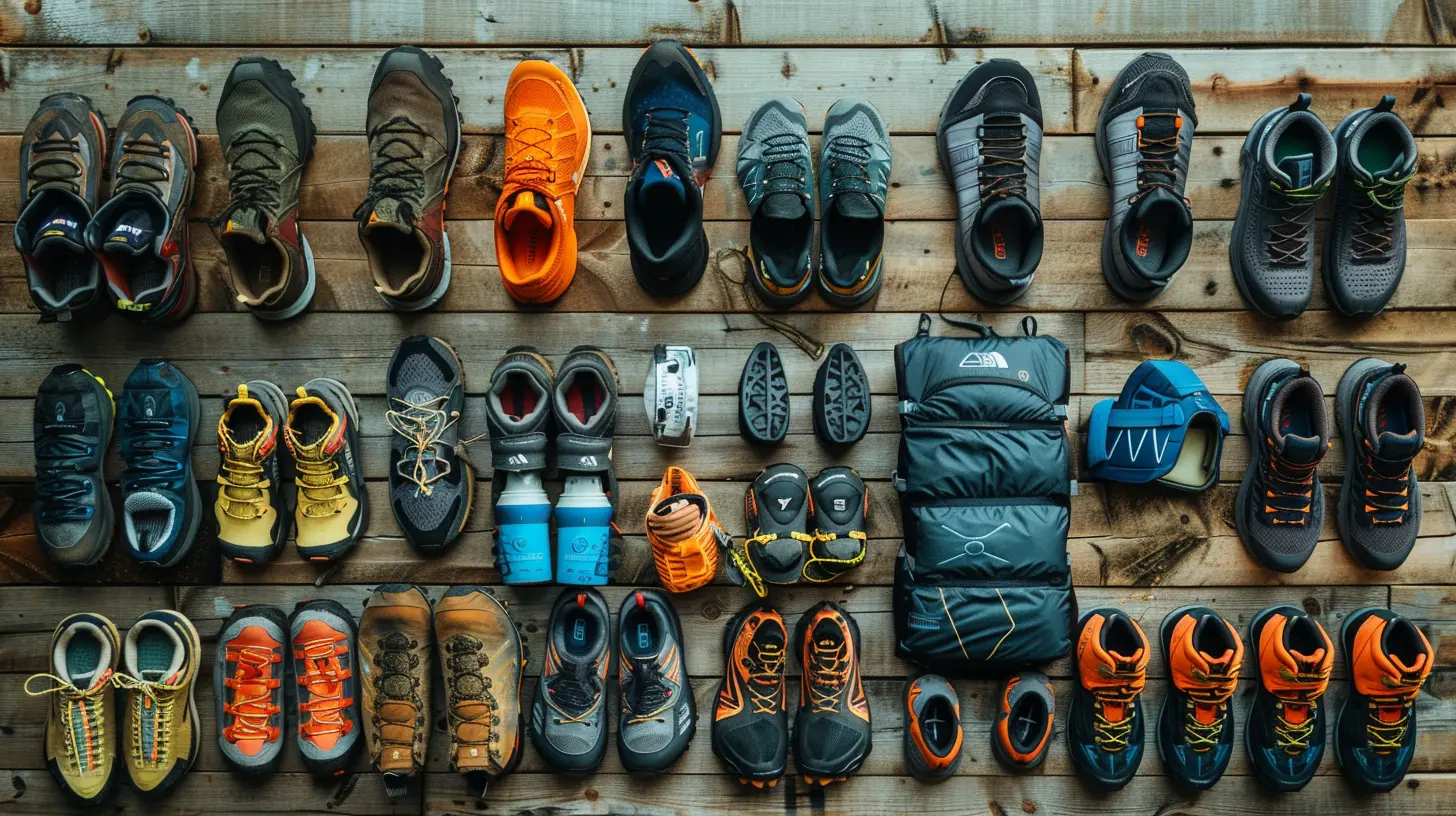How to Choose the Best Gear for Outdoor Running
15 November 2025
Running outdoors can be an exhilarating experience. Whether you're pounding the pavement in your neighborhood or hitting rugged trails, having the right gear makes all the difference. The right equipment ensures comfort, enhances performance, and prevents injuries. But with so many options out there, how do you choose the best gear for outdoor running?
In this guide, we’ll break it down piece by piece, helping you find the perfect running essentials tailored to your needs. 
1. Running Shoes: Your Most Important Investment
Finding the Right Fit
Your shoes can make or break your running experience. A poor-fitting pair can lead to discomfort, blisters, and even injuries. When selecting running shoes, pay attention to:- Arch Support – Do you have flat feet, neutral arches, or high arches? Get a shoe that matches your arch type.
- Cushioning – Some runners prefer minimal cushioning for a barefoot feel, while others need extra support to absorb impact.
- Shoe Size – Your feet swell when you run, so it’s wise to go half a size up from your everyday shoes.
- Pronation Control – If your feet roll inward or outward excessively, you may need stability or motion control shoes.
Road vs. Trail Running Shoes
- Road Running Shoes – Lightweight and built for pavement, they provide cushioning and flexibility.- Trail Running Shoes – Sturdier with aggressive tread patterns, they offer grip and protection on uneven terrain.
If you run on mixed surfaces, consider hybrid shoes that balance both features. 
2. Moisture-Wicking Clothing: Stay Dry & Comfortable
Cotton is a big no-no for running. Once it gets wet, it stays wet, which can make your run uncomfortable and even lead to chafing. Instead, opt for:- Moisture-Wicking Shirts & Shorts – Synthetic fabrics like polyester or merino wool pull sweat away from your skin.
- Compression Tights or Shorts – These provide muscle support and reduce fatigue.
- Weather-Appropriate Layers:
- Cold Weather – Thermal base layers, windproof jackets, and gloves.
- Hot Weather – Lightweight, breathable tank tops and shorts.
- Rainy Days – A water-resistant jacket keeps you dry without overheating. 
3. Running Socks: Avoid Blisters at All Costs
Socks might seem like an afterthought, but they play a crucial role. Choose:- Moisture-Wicking Fabrics – No more soggy, blister-causing socks!
- Seamless Designs – Reduces friction and hotspots.
- Cushioned or Thin Socks – Pick based on your preference and comfort.
Avoid cotton socks, as they retain moisture and increase the risk of blisters. 
4. A Well-Fitted Sports Bra (For Women)
A good sports bra offers support and minimizes discomfort. Look for:- High-impact support – Especially important for runners to reduce movement.
- Adjustable straps – Allows for a personalized fit.
- Sweat-wicking material – Prevents discomfort during long runs.
Comfort is key, so make sure the bra fits snugly without being too tight.
5. GPS Watch or Running App: Track Your Progress
Technology has made running smarter. A GPS watch or a smartphone app helps monitor:- Distance & Speed – Know how far and fast you're running.
- Heart Rate – Monitor intensity to improve endurance.
- Training Progress – Set goals and track improvements.
Popular options include Garmin, Apple Watch, Strava, and Nike Run Club. If a watch is too pricey, a free app on your phone does the job!
6. Hydration Gear: Stay Hydrated Without Hassle
Dehydration can slow you down and lead to fatigue. Depending on your run’s duration, consider:- Handheld Water Bottles – Great for short to mid-distance runs.
- Hydration Belts – Holds water bottles around your waist, keeping you hands-free.
- Hydration Vests – Ideal for long runs or trail running, offering storage for extra water and snacks.
If it's a short run, sipping water before and after may be enough. But for anything over an hour, hydration gear is a must!
7. Running Accessories: Small Additions, Big Differences
Sunglasses & Hat
- Protect your eyes from UV rays and reduce glare.- A lightweight cap helps keep the sun off your face and prevents sweat from dripping into your eyes.
Headphones for Motivation
Music or podcasts can make a huge difference during a run. Get wireless, sweat-resistant earbuds so you don’t have to deal with tangled cords.Reflective Gear for Safety
If you run in low-light conditions, reflective vests, bands, or even light-up armbands make you more visible to drivers and cyclists.Running Belt
A slim, lightweight belt carries essentials like your keys, phone, and energy gels without bouncing around.8. Choosing the Right Running Gear for Different Seasons
Summer Running Gear
- Lightweight, breathable clothing.- Sunglasses and a cap.
- Hydration essentials.
Winter Running Gear
- Layering is key – thermal base layer, windproof jacket, gloves, and a hat.- Avoid overdressing – you should feel slightly cold when you start.
- Consider thermal socks to keep your feet warm.
Rainy or Windy Conditions
- A water-resistant running jacket keeps you dry.- Avoid heavy fabrics that soak up water.
- A brimmed cap prevents raindrops from hitting your eyes.
9. Budget vs. Premium Running Gear: What’s Worth the Splurge?
Not all expensive gear is necessary, but certain items are worth investing in:Worth Spending More On
- Good Running Shoes – Prevent injuries and last longer.- Sports Bra (For Women) – Comfort and support are crucial.
- GPS Watch – If you're serious about tracking performance.
Where You Can Save
- Running Clothes – Plenty of affordable moisture-wicking options exist.- Accessories – Budget-friendly sunglasses and hats work just as well.
- Socks – Decent ones are available without breaking the bank.
Balance your budget wisely—invest in key gear while saving on extras.
Final Thoughts
Outdoor running is more enjoyable when you have the right gear. Prioritize running shoes, moisture-wicking clothes, and hydration. Accessories like GPS watches and reflective gear enhance your experience, but your budget will determine which ones to prioritize.The best running gear is the one that makes you feel comfortable, allows you to move freely, and keeps you safe. Now, lace up those shoes, hit the road (or trail), and enjoy every mile!
all images in this post were generated using AI tools
Category:
Sports GearAuthor:

Umberto Flores
